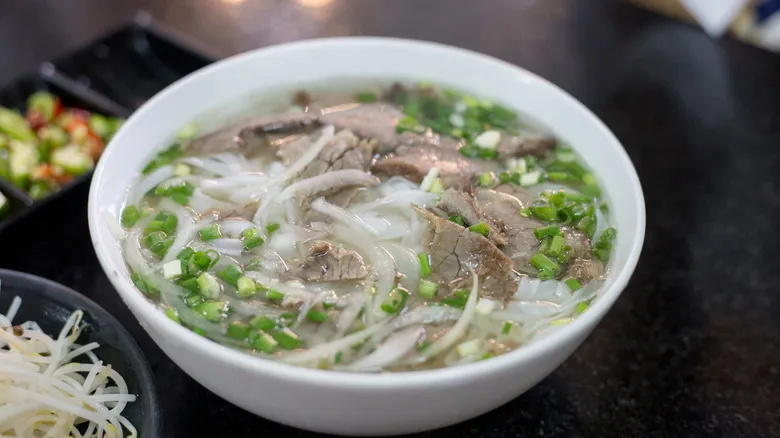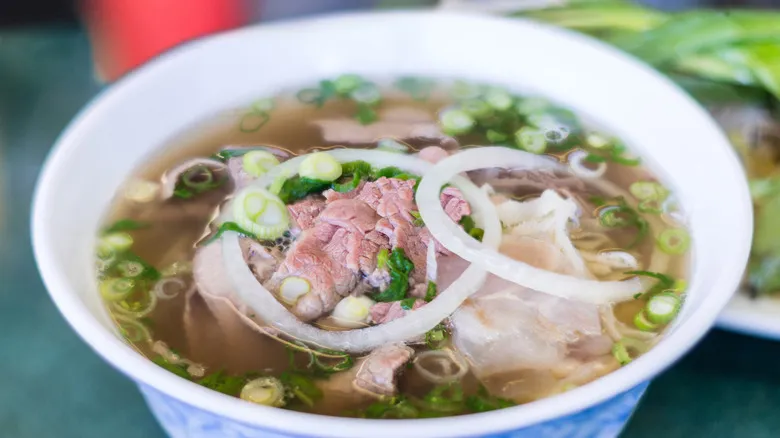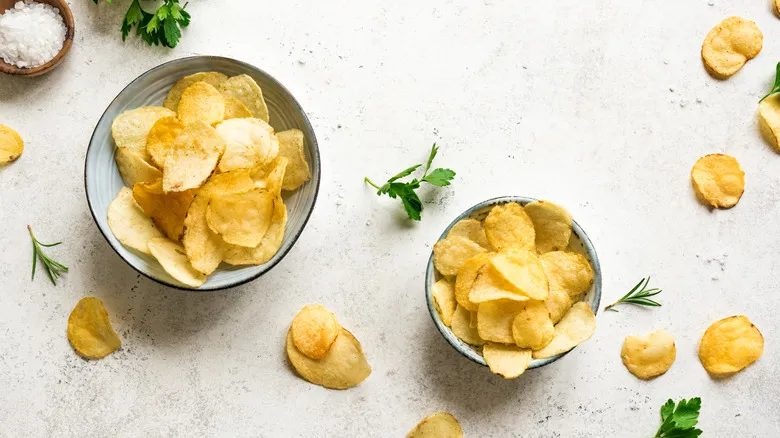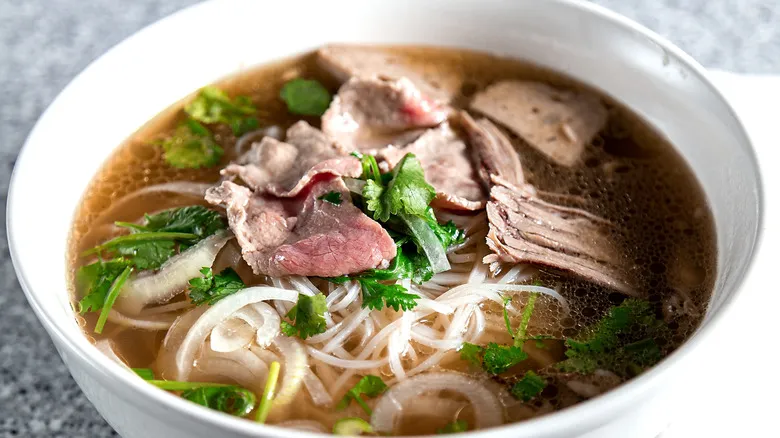Go for leaner cuts if you're making pho with raw beef

Rare beef pho (ph? tái) is a variation of the dish where the beef slices remain uncooked and are placed directly on top of the noodles. Just a few minutes before serving, a stream of steaming, nearly boiling broth is poured over the beef. By the time you grab your chopsticks, the meat will be perfectly cooked. This method ensures the juiciness and tenderness that characterize this style of pho.
If you're planning to prepare this type of pho, opt for lean, tender, and quick-cooking cuts of beef. Loin cuts like short loin, sirloin, and tenderloin work wonderfully, as does flank steak. Another popular choice is eye of round, a tougher cut that forms the center of the round section. For optimal results, partially freeze the beef before slicing it as thinly as possible. Thinner slices will cook more quickly when the hot broth is added.
Brisket is the ultimate cut for well-done pho

For those who enjoy their beef thoroughly cooked, consider trying well-done pho, or ph? chín. This variation of the Vietnamese noodle soup is similar to raw beef pho, but the slices of meat are parboiled and cooked well in advance before being added to the dish. While some believe this alters the traditional pho experience, it's important to choose what makes you feel most at ease. (Additionally, many Vietnamese people enjoy it this way as well.)
Brisket is the ideal choice for this style of pho. This cut comes from a part of the animal that endures significant physical stress, resulting in meat that is often quite tough. While this makes it less suitable for raw beef pho, it works perfectly for the well-done version, as the muscle fibers soften during the cooking process.
In preparing well-done pho, brisket is added to the pot while the bone broth simmers – a process that can take several hours, although the meat only needs to simmer in the broth for about one to one and a half hours. This is sufficient time for the texture to transform from tough to tender. Once fully cooked, the meat can be sliced thinly and set aside until it's time to place it atop the noodles.
Beef tendon is the cut you need for a chewy pho

While not as prevalent in the United States, sourcing beef tendons can lead to a delightful dish known as tendon pho (ph? gân). Tendons are the connective tissues that link a cow's muscles to its bones. Fresh tendons have a pinkish-white hue and a robust beef aroma, with a texture reminiscent of rubber bands (be sure to avoid any that are yellowed or have an unpleasant smell, as these indicate they are not fresh). Although they may not appear to be prime cuts of beef, when cooked correctly, their popularity in Vietnam and beyond becomes clear.
Similar to brisket, tendons are cooked in the broth, requiring only about 20 minutes of boiling to become tender. After cooking, they are removed from the broth and quickly submerged in ice water, a blanching process that enhances their chewy texture. For those who prefer a softer texture, simmering the tendons for up to four hours is an option.
Tendons are served just like any other topping in pho: when preparing the noodle soup, you place the slices over the rice noodles before adding the hot broth. A sprinkle of green onions and aromatic herbs will elevate your tasting experience. Other chewy, beefy options, such as tripe and beef balls, can accompany the tendons, as favored by chef Tu David Phu, who has shared his passion for this dish and its "painfully beautiful story" on Instagram.
Recommended

The Right Way To Freeze And Thaw Leftover Hot Dog Buns

3 Clever Tips To Keep Your Popsicles Frozen In A Cooler

The Microwave Method For Easy Homemade Potato Chips

Make Your Own Saucy (Not Soggy) Nuggets With These Easy Tips
Next up

